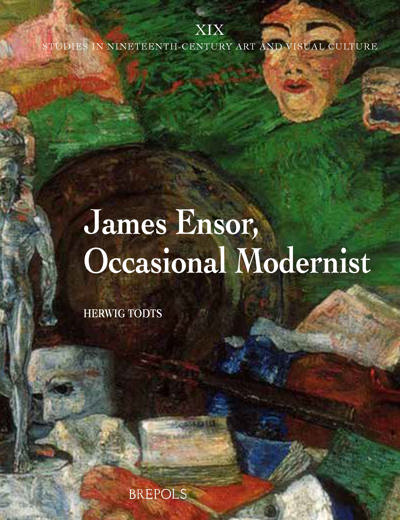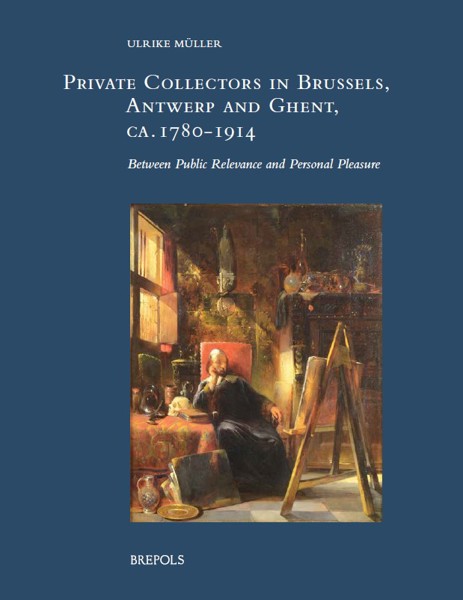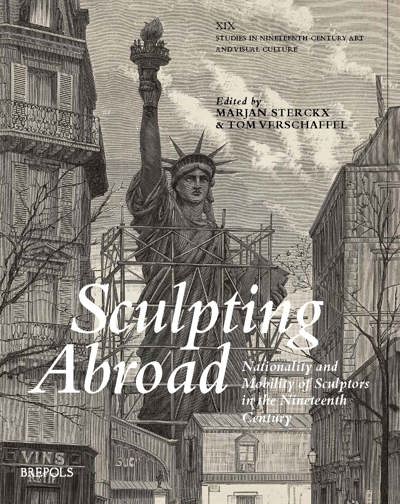
Antoine Wiertz (1806–65) and the Quest for Modern Genius
The Reverse of the Sublime
Bram van Oostveldt, Stijn Bussels, Caroline Van Eck (eds)
- Pages: 168 p.
- Size:216 x 280 mm
- Illustrations:75 col.
- Language(s):English
- Publication Year:2024
- € 95,00 EXCL. VAT RETAIL PRICE
- ISBN: 978-2-503-60473-2
- Hardback
- Forthcoming (Sep/24)
*How to pre-order?
The first part of this book studies the oeuvre of the Belgian Romantic painter Antoine Wiertz (1806-1865) within an international art historical context, while the second part focuses on the Musée Wiertz as one of the earliest examples of the artist museum.
Bram Van Oostveldt studied art and theatre studies at Ghent university and obtained in his PhD in 2005 on the influence of Diderot’s dramaturgy and theatre theory in the Austrian Netherlands. From 2007 until 2019 he was assistant and associate professor theatre studies at the University of Amsterdam. From 2013 until 2017 he was senior researcher in the ERC project Elevated Minds: The Sublime in the Public Arts in 17th-century Paris and Amsterdam at Leiden University. Since 2019 he is professor of theatre history at Ghent University. He has published widely on 17th -, 18th – and 19th performing arts in relation to the visual arts, including two monographs.
Stijn Bussels studied art and theatre studies at Ghent University where he received his PhD in 2005 on the use of rhetoric in the 1549 Entry of Philip II in Antwerp, published by Rodopi in 2012. From 2005 until 2010 he worked as postdoc in the NWO VICI-project Art, Agency and Living Presence in Leiden (PI Caroline van Eck). There he focused on ancient Roman writers dealing with the belief that images are alive. From 2011-2013 he worked as assistant professor theatre studies at Groningen University. From 2013 until 2018, he was PI of the ERC Starting Grant project Elevated Minds. The sublime in the public arts in seventeenth-century Paris and Amsterdam at Leiden University. In 2017 he was appointed as professor of art history before 1800 at Leiden University.
Caroline van Eck obtained her PhD in aesthetics at the University of Amsterdam in 1994. In 2016, she was appointed as Professor of Art History at Cambridge. Her main research interests are art and architectural history and theory of the eighteenth century; the relations between rhetoric and the arts; the anthropological and psychological aspects of the impact of art works; and processes of stylistic and cultural transfer considered from the perspective of the agency of artefacts. In 2014, she received the Prix Descartes-Huygens, awarded by the Académie des Sciences, the Académie des Inscriptions et Belles Lettres in France and the Dutch Royal Academy of Sciences; in 2015, she was made a Chevalier of the Ordre National du Mérite, and in the same year she received the Grand Prix du Rayonnement de la Littérature et Culture Françaises, awarded by the Académie Française. In 2016, she received a honorary doctorate from the University of Neuchâtel.
In art history, the Belgian romantic artist Antoine Joseph Wiertz (1806–65) is often considered as the prototype of the artist as a “failure”. Contemporaries described his colossal and melodramatic works as an odd and monstrous potpourri lacking focus and escaping all aesthetic categories. This disparaging for his work already began in 1839 when Wiertz exhibited his Greeks and Trojans fighting over the body of Patroclus at the Paris Salon. After seeing the painting, the Parisian critic Eduard Thierry wrote that “the step from the sublime to the ridiculous has been completely trespassed”, while Charles Baudelaire described Wiertz as this idiot whose paintings were as large as his stupidity. Until deep in the twentieth century, this criticism would set the tone for the Wiertz study and reception, often labeling him as a curiosity and an outcast operating within the margins of contemporary artistic circles. This collection of essays corrects this cliché of Wiertz as an outsider. The first part of the book studies his oeuvre within an international art historical context focusing on the diverse genres and media he practiced. The second part focuses on the Musée Wiertz as one of the earliest examples of the artist museum as a new nineteenth-century phenomenon. Written by internationally renowned scholars, this book provides a new and exciting perspective on this fascinating but hardly studied artist.
List of Figures
Introduction
Bram van Oostveldt, Stijn Bussels, and Caroline van Eck
I. THE FORMATION OF AN ARTIST
Becoming Wiertz: The Early Years (1820–37)
Dominique Marechal
Embattled Classicism
Stephen Bann
II. WIERTZ AND THE AESTHETICS OF THE GROTESQUE
Boring Modernism? Wiertz’s Sculptures
Caroline van Eck
Wiertz’s Philosophical Paintings
Hanneke Grootenboer
M Stands for Mort: The Last Hours of Antoine Wiertz
Marc Gotlieb
III. WIERTZ AND THE MUSEUM
Artists’ Museums: A Symbolical Form in the History of Culture
Pascal Griener
Spectacles Full of Lessons or Performances for Posterity? The Musée Wiertz Contrasted with the Musée Gustave Moreau
Maarten Liefooghe
The Case of Antoine Wiertz: Art and/or Politics?
Bart Verschaffel
Index of Names
Author Biographies




